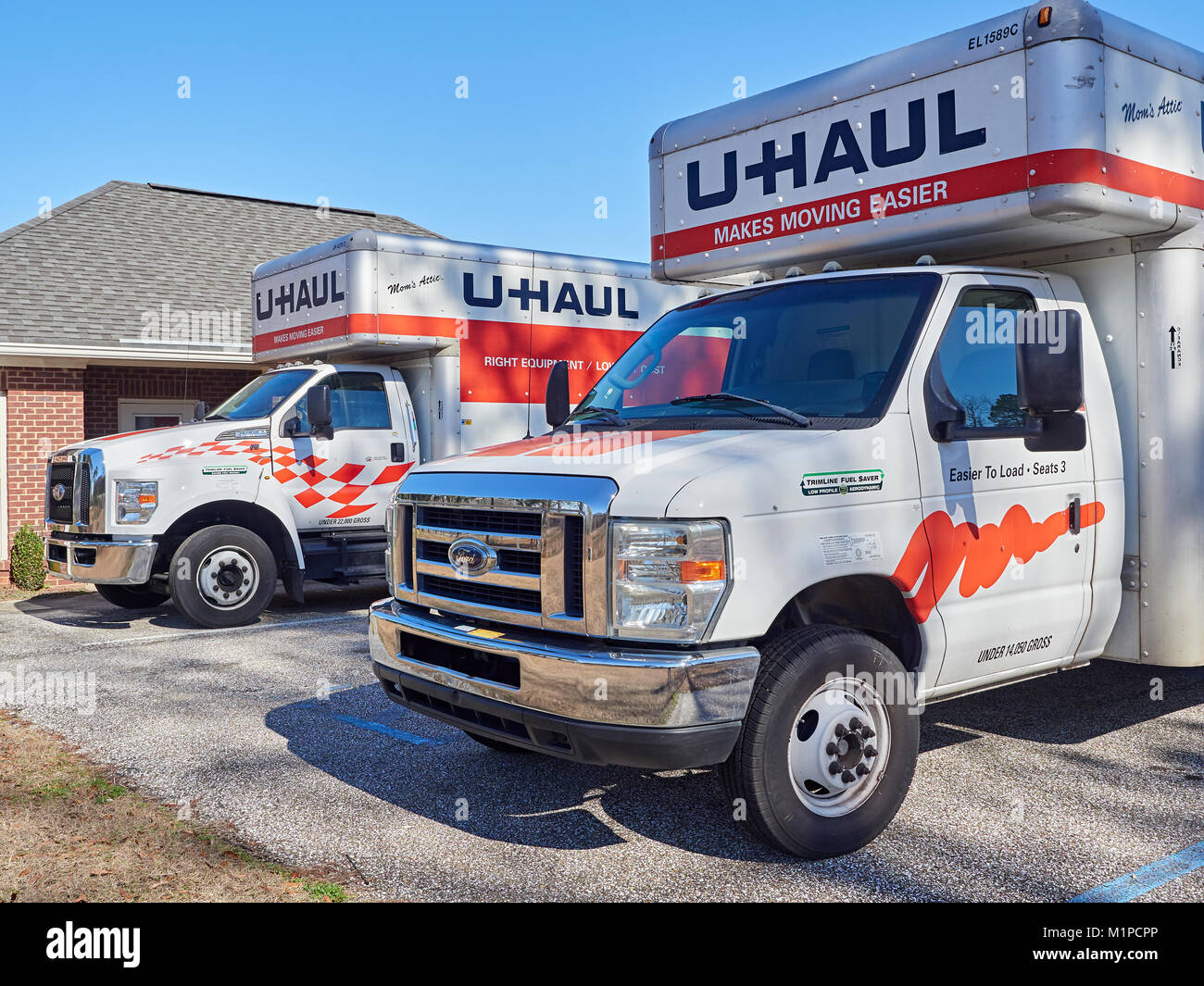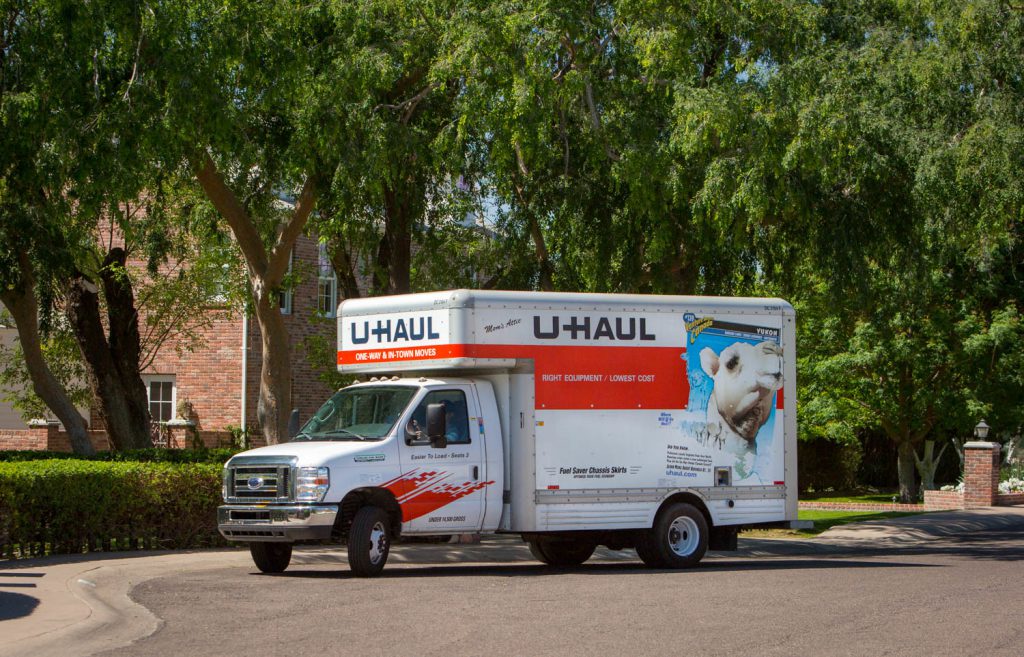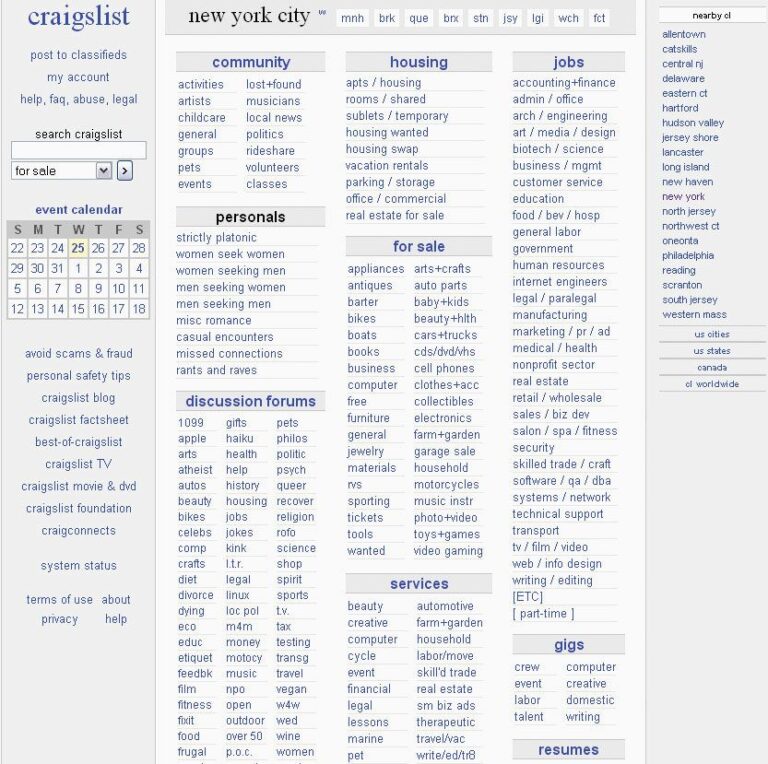Is A U-Haul 26′ Truck Interior Actually 8′ Wide? Unpacking the Dimensions
Is A U-Haul 26′ Truck Interior Actually 8′ Wide? Unpacking the Dimensions cars.truckstrend.com
Moving is a monumental task, and one of the most critical decisions you’ll make is choosing the right-sized rental truck. For many, the U-Haul 26-foot truck represents the ultimate solution for large homes, multi-room apartments, or extensive hauls. It’s often advertised with impressive dimensions, leading many to assume a vast, rectangular cargo bay ready to swallow their entire household. Specifically, a common perception, fueled by some marketing, is that the interior of this behemoth is a full 8 feet wide.
But is a U-Haul 26′ truck interior actually 8′ wide? This seemingly simple question holds significant implications for your packing strategy, the safety of your belongings, and the overall efficiency of your move. The short answer, as we’ll delve into, is generally no, not from wall to wall for its entire length. While the truck might have an overall exterior width that approaches or exceeds 8 feet, and certain interior sections might be close, the usable interior cargo space, particularly at floor level, is almost always less than 8 feet.
Is A U-Haul 26′ Truck Interior Actually 8′ Wide? Unpacking the Dimensions
Understanding the true dimensions of your moving truck is paramount. Miscalculating space can lead to a host of problems: items not fitting, requiring multiple trips, damaged furniture from forcing it into tight spaces, or the frustration of leaving cherished possessions behind. This comprehensive guide will dissect the actual interior dimensions of a U-Haul 26′ truck, explain why discrepancies exist, offer practical advice for maximizing your space, and provide all the crucial information you need for a smooth and informed move.
Unraveling U-Haul’s Stated Dimensions vs. Reality
When U-Haul (or any rental company) advertises a truck as "26 feet," they are primarily referring to the approximate exterior length of the cargo box. Similarly, any mention of "8 feet wide" is often a general, rounded figure, or might refer to the widest exterior point, or even the interior width at its widest, unencumbered point. The reality of a truck’s interior cargo space is far more nuanced.
Trucks, by design, are not perfect rectangular prisms on the inside. Several structural components inherently reduce the usable width and sometimes height. These include:
- Wheel Wells: This is the most significant culprit. The large, protruding housings for the rear wheels drastically narrow the usable floor space for a substantial portion of the truck’s length.
- Structural Supports and Ribbing: The frame and internal supports necessary for the truck’s integrity and to secure cargo can slightly intrude into the cargo area.
- Interior Paneling and Insulation: The walls of the truck are not just thin metal; they include insulation and inner panels, which, while offering protection, consume a few inches of width on each side.
- Ramp Housing: The mechanism for the loading ramp often takes up a small section of the truck’s interior space, typically near the rear door, reducing usable length.

Therefore, while a U-Haul 26′ truck might feel large, and its exterior width might approach 8 feet, the internal, unobstructed, wall-to-wall width will invariably be less.

The Nuances of Truck Interior Measurements: What You Need to Know
Let’s get down to the specific numbers for a typical U-Haul 26′ truck. While exact measurements can vary slightly between different model years or specific manufacturers (U-Haul uses trucks from various makers like Ford, GMC, and International), there’s a general range you can expect.
- Advertised Length (Exterior Box): Approximately 26 feet
- Advertised Width (General/Exterior): Often cited as around 8 feet
- Advertised Height (General): Often cited as around 8 feet

Actual Typical Interior Measurements:
- Interior Length (Floor to Rear Door): Generally close to the advertised 26 feet, though the ramp housing might slightly reduce this at the very rear.
- Interior Height: Usually around 7 feet 10 inches to 8 feet. This dimension is often closer to the advertised number and provides excellent vertical stacking potential.
- Interior Width (Wall-to-Wall, Above Wheel Wells): This is the critical dimension. Typically, this will range from 7 feet 7 inches to 7 feet 10 inches. So, while it’s close to 8 feet, it’s not quite there. Those few inches can make a big difference for items designed for an 8-foot space.
- Interior Width (Between Wheel Wells): This is the most restrictive dimension. The space between the wheel wells is often significantly narrower, typically ranging from 5 feet 0 inches to 6 feet 0 inches. This is where large items like sofas, king-size mattresses, or wide appliances become challenging.
Practical Impact:
Imagine you have a king-size mattress, which is typically 76 inches (6 feet 4 inches) wide. It will comfortably fit flat above the wheel wells. However, it will not fit flat between the wheel wells. Similarly, an 8-foot long sofa (96 inches) will require careful maneuvering, potentially needing to be loaded on its end or diagonally to fit past the narrowest points, and certainly won’t fit flat across the width between the wells.
Why the Discrepancy Matters: Practical Implications for Movers
Knowing the true dimensions isn’t just an academic exercise; it has tangible impacts on your moving day.
- Packing Efficiency and Loading Strategy: The biggest challenge is the wheel wells. You cannot place large, flat items like dressers or appliances flush against the floor across the entire width of the truck. This forces you to strategically load taller items around the wells, or place narrower items between them. Large items like sofas often need to be stood on end or loaded at an angle to fit.
- Furniture Fit and Damage Prevention: Believing you have a full 8 feet of width might lead you to assume large pieces of furniture (like certain sofas, wide armoires, or very large entertainment centers) will slide in easily. When they don’t, you might be tempted to force them, leading to scratches, dents, or even structural damage to your furniture or the truck.
- Calculating Cubic Feet: While U-Haul provides a cubic foot estimate (around 1,600 cu. ft. for the 26′ truck), this is a theoretical maximum. The irregular shape caused by wheel wells means that achieving the full advertised volume requires incredibly precise packing, often with smaller, flexible items filling every nook and cranny. For practical purposes, your usable volume might be slightly less.
- Time Management: Having to re-strategize your loading plan on the fly because items don’t fit as expected can significantly add to your moving time, especially if you’re paying hourly movers.
Tips for Maximizing Space in a U-Haul 26′ Truck (Given Real Dimensions)
Armed with the knowledge of actual dimensions, here’s how to optimize your packing and loading:
- Measure Your Largest Items: Before you even book the truck, measure your longest, widest, and tallest pieces of furniture (sofas, mattresses, dining tables, large appliances). Compare these to the actual interior dimensions, especially the width between the wheel wells (approx. 5-6 feet).
- Plan Around the Wheel Wells: These are your primary obstacles.
- Over the Wells: Lay mattresses, box springs, and headboards flat over the top of the wheel wells. They provide a sturdy, flat surface above the obstruction.
- Between the Wells: Use this narrower section for heavy, dense items like refrigerators, washing machines, or large boxes that can fit snugly.
- Around the Wells: Place furniture like dressers or bookshelves immediately forward or backward of the wells.
- Load Heaviest Items First, Low and Centered: This is crucial for stability. Place heavy boxes and appliances at the very front of the truck, against the bulkhead, and as low as possible.
- Utilize Vertical Space: The 26′ truck has generous height (nearly 8 feet). Stack boxes securely, placing heavier boxes at the bottom. Use furniture like dressers or refrigerators as bases for stacking.
- Pack Tight to Prevent Shifting: Fill every void. Use blankets, pillows, and soft items to fill gaps between furniture and boxes. This prevents items from shifting during transit, which can cause damage.
- Disassemble When Possible: Take apart bed frames, dining tables, and large shelving units. This makes them easier to carry and fit into the truck. Bag and label all hardware.
- Use Furniture Pads and Moving Blankets: Protect your furniture from scratches and dings, especially when stacking or placing items closely together.
- Create a Loading Diagram: For very large moves, a simple sketch of your truck’s interior and where major items will go can be incredibly helpful.
Beyond the 26′ Truck: A Brief Look at Other U-Haul Sizes
The principle of advertised vs. actual dimensions applies to U-Haul’s smaller trucks as well.
- 10′ Truck: Often advertised as fitting a studio or small apartment. Interior width is significantly less than 8 feet, typically around 4’7" to 5′ wide. No wheel well intrusion on the floor.
- 15′ Truck: Good for 1-bedroom apartments. Interior width around 7’8", with wheel well intrusion reducing floor width to around 3’10" to 4’6".
- 20′ Truck: Suitable for 2-3 bedroom homes. Interior width around 7’8", with wheel well intrusion similar to the 15′ and 26′ models (around 5′ to 6′).
The key takeaway is consistent: always assume the usable interior width will be less than the advertised general dimension, and be mindful of wheel well intrusions in all but the smallest box trucks.
Important Considerations Before Renting
- Verify Actual Dimensions: While this article provides typical ranges, it’s always best to check U-Haul’s official website for the specific dimensions of the truck model you intend to rent. Some locations might even allow you to briefly inspect a truck if available.
- Loading Time and Fatigue: Loading a 26-foot truck is physically demanding. Plan for ample time and consider recruiting help or hiring professional movers.
- Insurance: Rental truck insurance is highly recommended. Your personal auto insurance may not cover rental trucks, and your homeowners’ insurance typically won’t cover items in transit.
- Fuel Costs: A 26′ U-Haul truck is a gas guzzler. Factor in significant fuel costs, especially for long-distance moves (expect 8-10 MPG).
- Driving Experience: These are large vehicles. Ensure you’re comfortable driving a truck of this size, especially in urban environments, on highways, and when backing up.
Practical Advice and Actionable Insights
For a successful move with a U-Haul 26′ truck:
- Don’t assume: Never assume an item will fit based on advertised dimensions. Measure your largest items, then check U-Haul’s detailed specifications (often found under "Features" or "Specs" for each truck size on their website).
- Visualize the space: Once you know the actual dimensions, mentally (or even physically, with tape on your floor) map out how your largest items will fit. Pay special attention to the wheel well areas.
- Pack smart, not just full: Focus on creating a stable, secure load. Items packed tightly but haphazardly are more prone to damage than a well-planned, albeit slightly less full, load.
- When in doubt, go bigger (if budget allows): If you’re on the fence between two sizes, or worried about fitting a few key items, opting for the next size up can save you immense stress, time, and the potential cost of a second trip. The slight increase in rental cost is often negligible compared to these potential headaches.
Concluding Summary
The question "Is a U-Haul 26′ truck interior actually 8′ wide?" leads us to a clear answer: no, not in terms of consistent, usable interior wall-to-wall width for its entire length. While the truck is impressively large and designed for substantial moves, its actual interior width, particularly at floor level due to wheel wells, is typically closer to 7 feet 7 inches to 7 feet 10 inches, and as narrow as 5 to 6 feet between the wheel wells.
Understanding this discrepancy is vital for a smooth, efficient, and damage-free moving experience. By measuring your belongings, planning your loading strategy around the truck’s true dimensions, and utilizing smart packing techniques, you can effectively harness the substantial capacity of the 26′ U-Haul truck. Proper planning based on facts, not just marketing figures, will save you time, money, and considerable moving-day stress.
U-Haul 26′ Truck: Key Dimensions & Considerations Table
This table provides a comprehensive overview of typical U-Haul 26′ truck features, focusing on dimensions and other crucial aspects for movers. Please note that exact figures can vary slightly by truck model and year. Pricing is approximate and highly variable by location, demand, and season.
| Feature/Dimension | Advertised/Common Perception | Actual Typical Interior Measurement | Notes/Impact on Moving |
|---|
Is a U-Haul 26′ Truck Interior Actually 8′ Wide? Unpacking the Dimensions
Moving is a monumental task, and one of the most critical decisions you’ll make is choosing the right-sized rental truck. For many, the U-Haul 26-foot truck represents the ultimate solution for large homes, multi-room apartments, or extensive hauls. It’s often advertised with impressive dimensions, leading many to assume a vast, rectangular cargo bay ready to swallow their entire household. Specifically, a common perception, fueled by some marketing, is that the interior of this behemoth is a full 8 feet wide.
But is a U-Haul 26′ truck interior actually 8′ wide? This seemingly simple question holds significant implications for your packing strategy, the safety of your belongings, and the overall efficiency of your move. The short answer, as we’ll delve into, is generally no, not from wall to wall for its entire length. While the truck might have an overall exterior width that approaches or exceeds 8 feet, and certain interior sections might be close, the usable interior cargo space, particularly at floor level, is almost always less than 8 feet.
Understanding the true dimensions of your moving truck is paramount. Miscalculating space can lead to a host of problems: items not fitting, requiring multiple trips, damaged furniture from forcing it into tight spaces, or the frustration of leaving cherished possessions behind. This comprehensive guide will dissect the actual interior dimensions of a U-Haul 26′ truck, explain why discrepancies exist, offer practical advice for maximizing your space, and provide all the crucial information you need for a smooth and informed move.
Unraveling U-Haul’s Stated Dimensions vs. Reality
When U-Haul (or any rental company) advertises a truck as "26 feet," they are primarily referring to the approximate exterior length of the cargo box. Similarly, any mention of "8 feet wide" is often a general, rounded figure, or might refer to the widest exterior point, or even the interior width at its widest, unencumbered point. The reality of a truck’s interior cargo space is far more nuanced.
Trucks, by design, are not perfect rectangular prisms on the inside. Several structural components inherently reduce the usable width and sometimes height. These include:
- Wheel Wells: This is the most significant culprit. The large, protruding housings for the rear wheels drastically narrow the usable floor space for a substantial portion of the truck’s length. These wells can extend quite high, impacting how low certain wide items can sit.
- Structural Supports and Ribbing: The frame and internal supports necessary for the truck’s integrity and to secure cargo can slightly intrude into the cargo area. These are vital for the truck’s structural integrity and for providing tie-down points.
- Interior Paneling and Insulation: The walls of the truck are not just thin metal; they include insulation and inner panels, which, while offering protection from temperature fluctuations and preventing damage to items, consume a few inches of width on each side.
- Ramp Housing: The mechanism for the loading ramp often takes up a small section of the truck’s interior space, typically near the rear door, reducing usable length slightly at that specific point.
Therefore, while a U-Haul 26′ truck might feel large, and its exterior width might approach 8 feet, the internal, unobstructed, wall-to-wall width will invariably be less. This is a standard practice across the industry, not unique to U-Haul, as it reflects the engineering realities of vehicle construction.
The Nuances of Truck Interior Measurements: What You Need to Know
Let’s get down to the specific numbers for a typical U-Haul 26′ truck. While exact measurements can vary slightly between different model years or specific manufacturers (U-Haul uses trucks from various makers like Ford, GMC, and International), there’s a general range you can expect. It’s these precise interior dimensions that truly dictate what you can fit and how.
- Advertised Length (Exterior Box): Approximately 26






